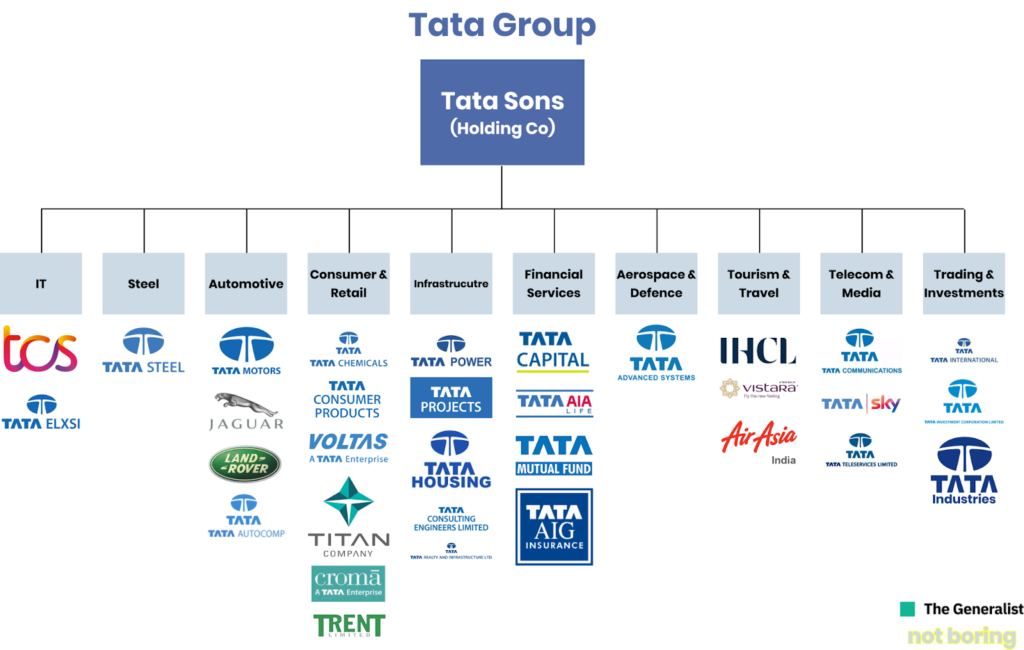The Incredible Journey of Reliance Industries: How It Became India’s Biggest Company
Reliance Industries is one of India’s most successful and influential companies, dominating sectors like petrochemicals, retail, telecom, and digital services. But its journey began with a single man’s vision—Dhirubhai Ambani—who transformed a small textile business into a global empire.
Today, Reliance is India’s most valuable company, with a market capitalization of over $200 billion. But how did it all start? How did Reliance grow from a small trading business to an industry leader?
This blog will take you through the story of Reliance Industries, its early struggles, massive successes, and key business strategies, giving you valuable insights to apply to your own entrepreneurial journey.
The Beginning: How Dhirubhai Ambani Started Reliance
1. Early Life of Dhirubhai Ambani
- Dhirubhai Ambani was born in 1932 in a small village called Chorwad in Gujarat, India.
- He came from a modest family, and his father was a school teacher.
- With limited formal education, he always dreamed of doing something big.
At a young age, Dhirubhai moved to Aden (now Yemen), where he worked as a gas station attendant and later as a clerk in a trading firm. Here, he learned business strategies, trade, and the power of global markets.
2. The Birth of Reliance in 1966
- In 1966, Dhirubhai Ambani returned to India and founded Reliance Commercial Corporation in Mumbai.
- He started by importing polyester yarn and exporting spices.
- Seeing the demand for textiles in India, he set up a small textile mill in Naroda, Gujarat.
- This marked the beginning of Reliance Textiles, which later became Reliance Industries Limited (RIL).
The Growth Phase: How Reliance Expanded Rapidly
3. The First Major Breakthrough: The IPO in 1977
Dhirubhai Ambani believed that public participation was crucial for business expansion.
- In 1977, Reliance issued its Initial Public Offering (IPO), raising money from small investors across India.
- Over 58,000 investors invested in Reliance, making it one of the largest IPOs at that time.
- This move democratized wealth creation and built a strong investor base for the company.
This was a revolutionary step, as most Indian businesses were run by traditional business families who avoided public investment.
4. Diversification into Petrochemicals
Realizing that polyester and textiles depended on raw materials like petrochemicals, Dhirubhai backward-integrated the business.
- In the 1980s, Reliance entered the petrochemical industry, manufacturing essential raw materials for textiles.
- This strategy gave them cost advantages and complete control over the supply chain.
- Soon, Reliance became India’s largest petrochemical company.
5. Entry into Oil & Gas Industry
Dhirubhai Ambani’s vision extended beyond textiles and petrochemicals.
- In 1993, Reliance started its oil exploration business, making it one of the few Indian companies in the energy sector.
- They discovered major oil and gas reserves in India and became key players in the energy industry.
The Next Generation: Mukesh Ambani’s Leadership
6. Mukesh vs. Anil Ambani – The Split of Reliance
After Dhirubhai Ambani passed away in 2002, a family dispute between his sons—Mukesh Ambani and Anil Ambani—led to the split of Reliance.
- In 2005, Reliance was divided:
- Mukesh Ambani took over Reliance Industries (oil, petrochemicals, and retail).
- Anil Ambani got Reliance Communications, Power, and Finance.
7. The Rise of Reliance Under Mukesh Ambani
Under Mukesh Ambani’s leadership, Reliance expanded aggressively into new sectors:
✅ Reliance Retail (2006) – Today, it’s India’s largest retailer, with over 18,000 stores.
✅ Jio Telecom (2016) – The game-changer that disrupted the Indian telecom industry with free 4G data and cheap internet plans.
✅ Reliance Digital & E-commerce – Competing with Amazon and Flipkart in India’s growing e-commerce market.
✅ Green Energy (2021) – Investing billions in solar and hydrogen energy for a sustainable future.
Key Strategies That Made Reliance a Giant
Reliance’s success is based on powerful business strategies that any entrepreneur can learn from:
1. Vertical Integration (Owning the Entire Supply Chain)
- Instead of depending on external suppliers, Reliance manufactures everything in-house, reducing costs and increasing efficiency.
- Example: From textiles to petrochemicals to retail, Reliance controls the entire process.
2. Innovation and Market Disruption
- Jio disrupted the telecom industry by offering free data and cheap internet, forcing competitors to lower prices.
- Reliance Retail challenged local kirana stores by introducing organized retail at lower prices.
3. Massive Investment in Infrastructure
- Reliance built India’s largest refinery in Jamnagar, making it a global leader in petrochemicals.
- Jio Fiber and 5G networks are among the most advanced in the world.
4. Strong Customer-Centric Approach
- Whether through Jio’s affordable mobile services or Reliance Fresh’s budget-friendly retail stores, Reliance focuses on customer satisfaction.
Lessons Entrepreneurs Can Learn from Reliance
If you’re an aspiring entrepreneur, here are key lessons from Reliance’s success:
✔ Think Big: Dhirubhai Ambani started small but always aimed high.
✔ Take Calculated Risks: Reliance entered multiple industries at the right time.
✔ Focus on Innovation: Jio and Reliance Retail disrupted markets.
✔ Expand Aggressively: Reliance dominates every industry it enters.
✔ Customer First: Reliance products are always built with the customer in mind.
Conclusion: The Future of Reliance Industries
Reliance Industries is now a global conglomerate with interests in oil, retail, telecom, and green energy.
Under Mukesh Ambani’s leadership, Reliance is focusing on:
✅ 5G and digital services to dominate India’s internet space.
✅ Renewable energy investments for a sustainable future.
✅ Expanding Jio and Reliance Retail to international markets.
The story of Reliance is a true inspiration for entrepreneurs. It shows that with vision, strategy, and innovation, you can build an empire from scratch.
Read The Legacy of Tata Group: How It Became India’s Most Respected Conglomerate, The Role of Entrepreneurship in Wealth Building, Rich and wealthy; the difference
Check out Official Website of Reliance, Forbes on Reliance Industries



